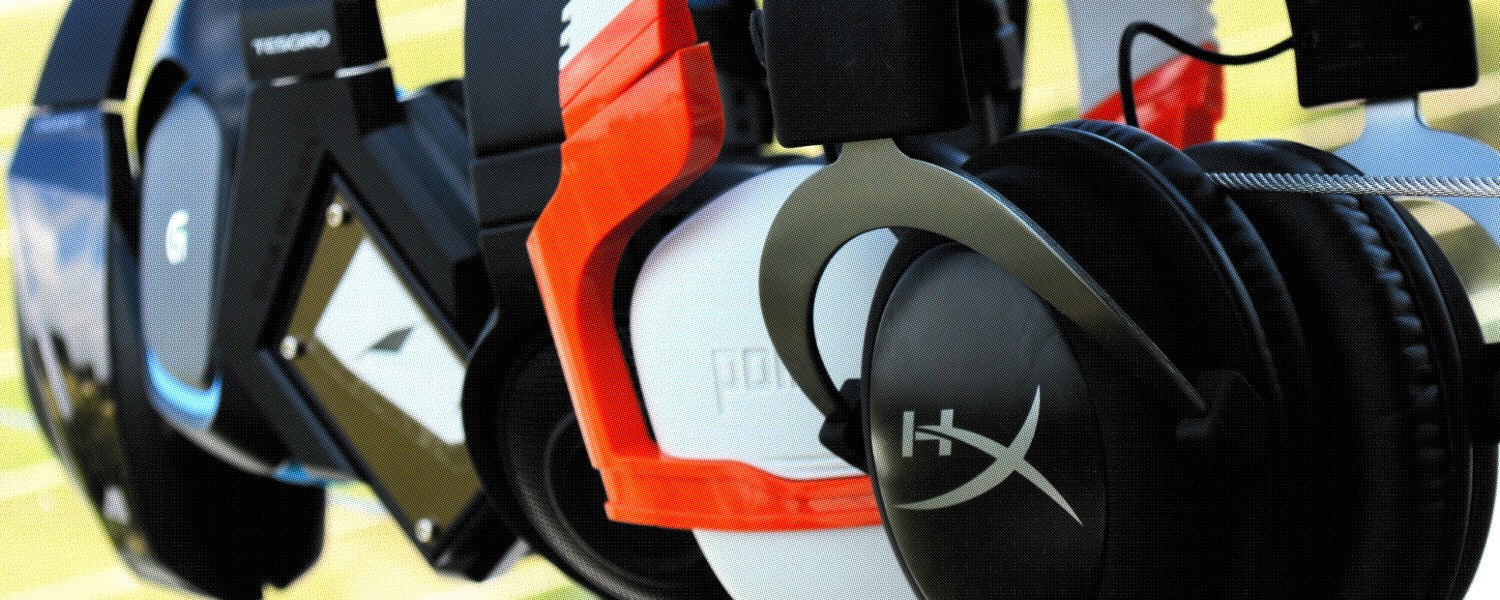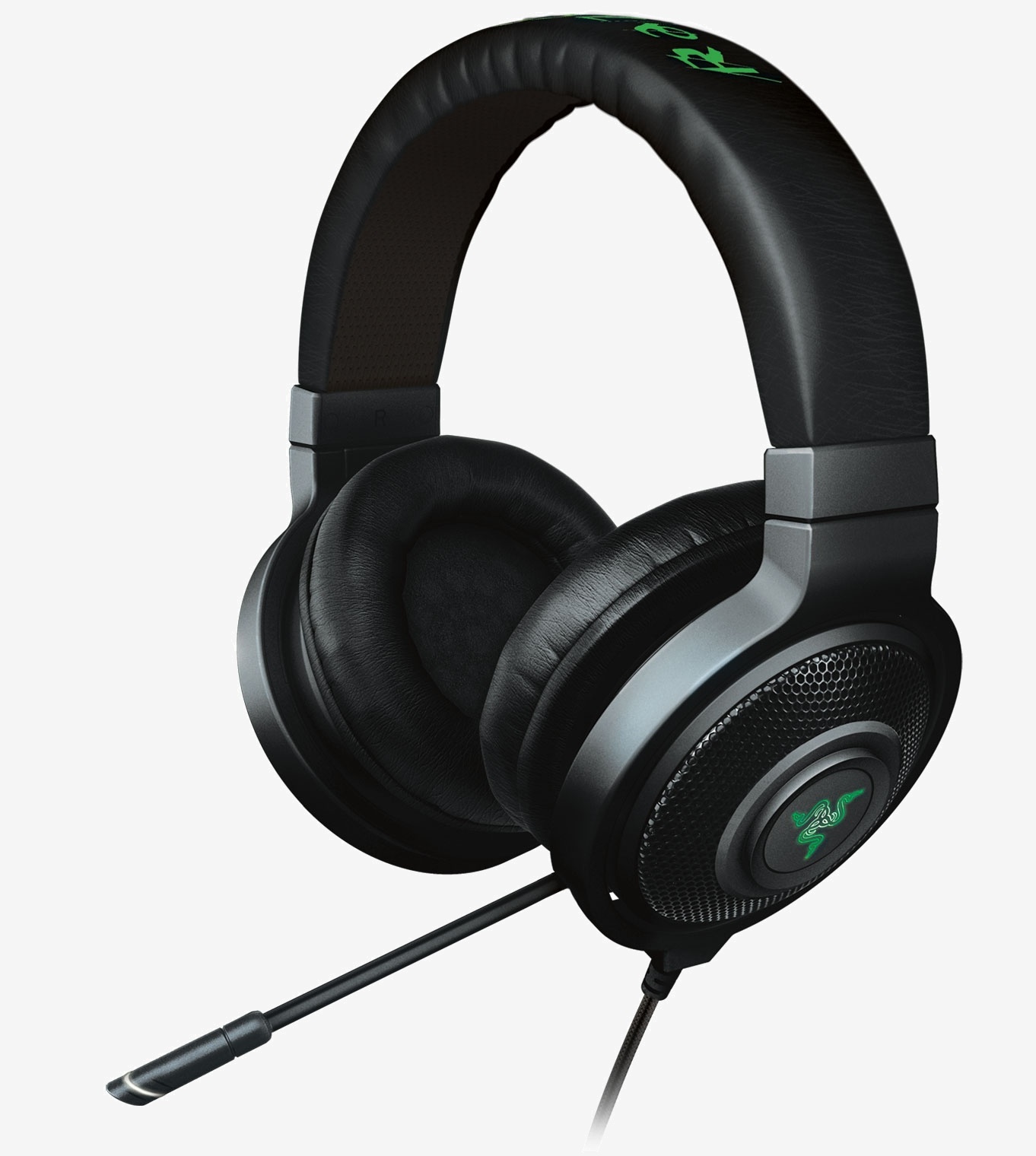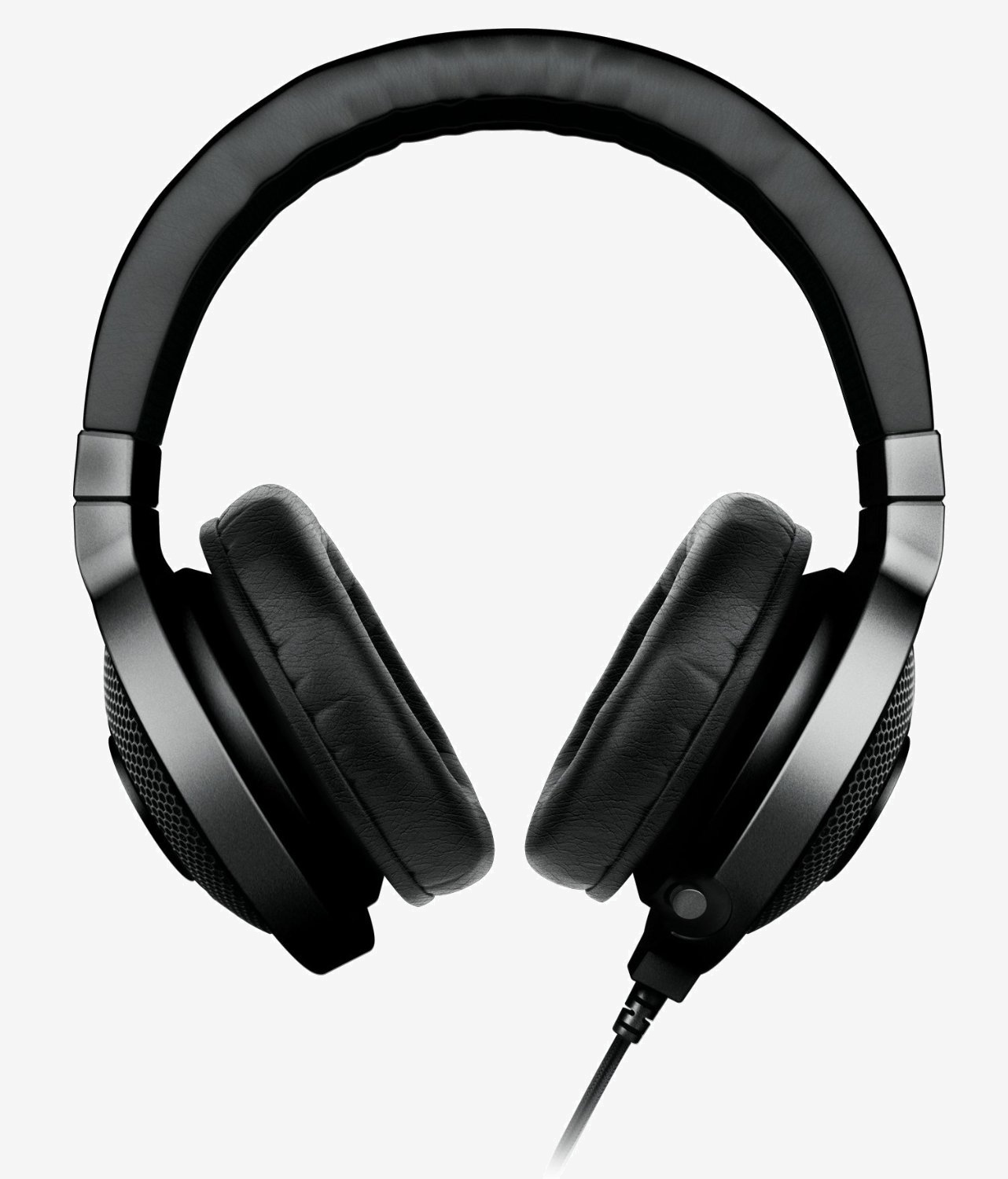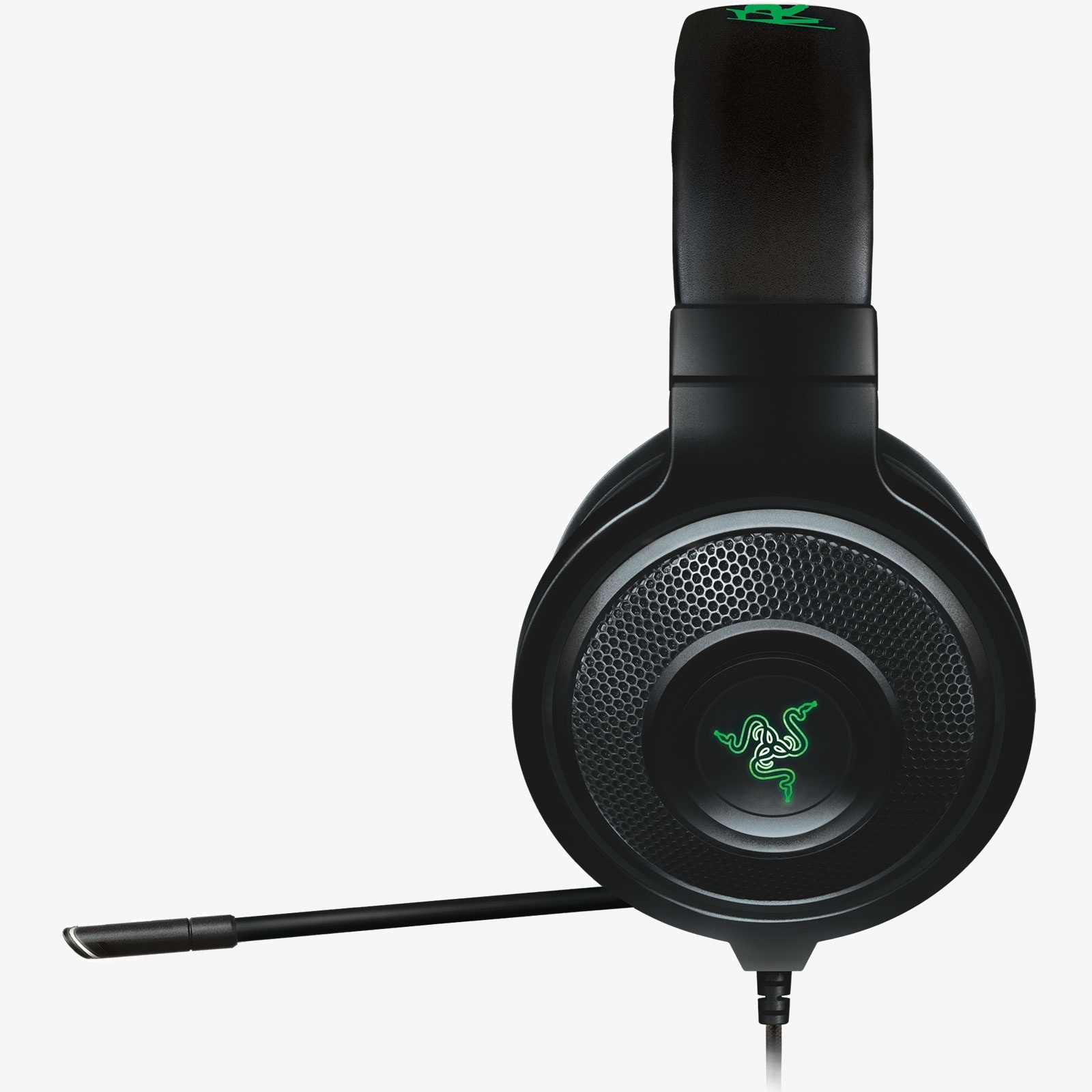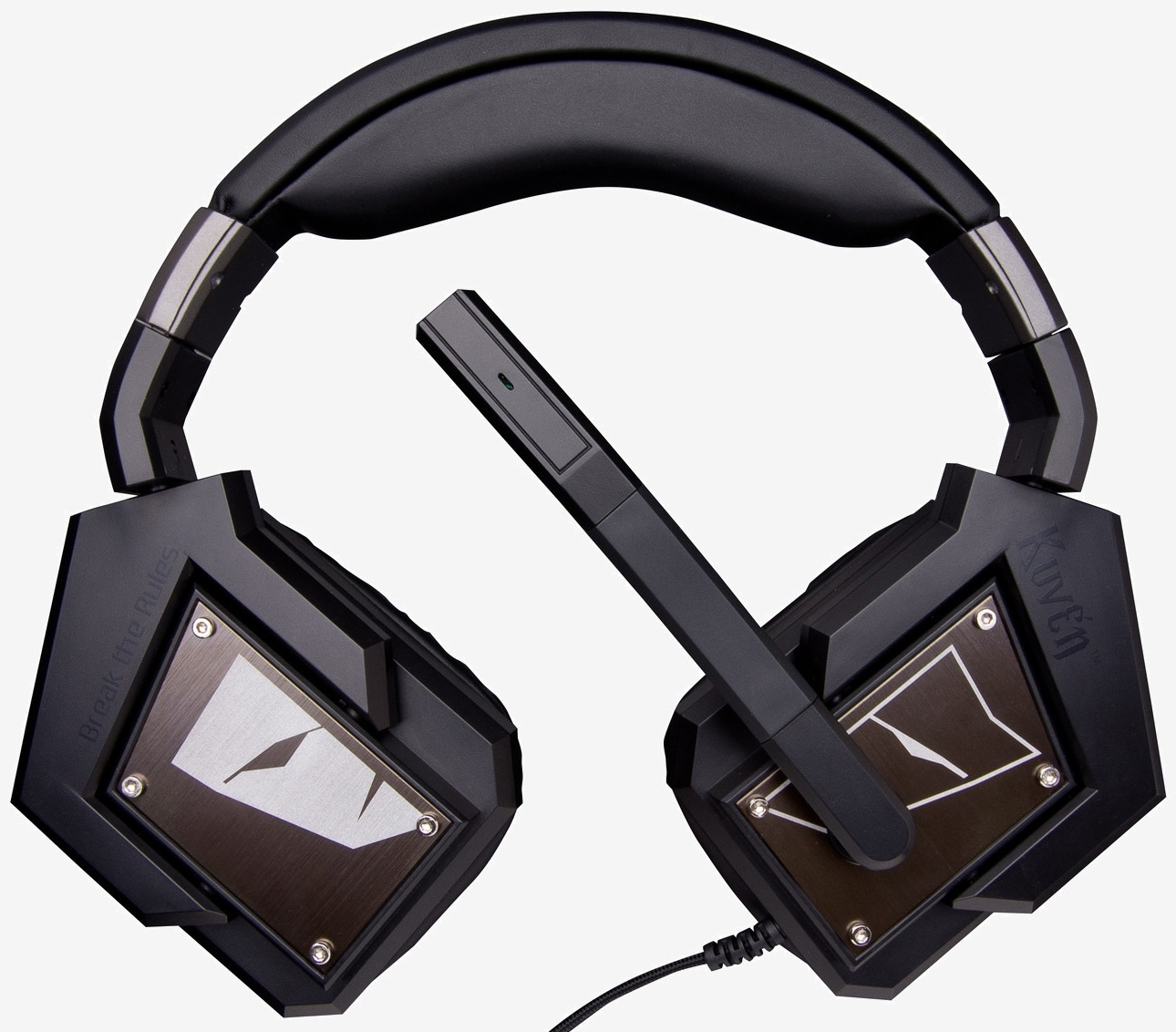Razer, Tesoro
Razer Kraken 7.1 Chroma
Price: $100
The Razer Kraken 7.1 Chroma is designed for one purpose and that is to game. There are no 3.5mm audio jacks and no dongles, just a single USB cable. Being that these are exclusively USB-powered headphones, you get the same virtual 7.1 audio effects as the Kingston HyperX Cloud II.
The Kraken 7.1 Chroma has been constructed almost entirely from plastic. The build quality is fine but the design leaves a little to be desired in our opinion. The circular ear cups for example aren't the most comfortable because they don't cover your entire ear. My ears hurt an hour into gaming.
Built into each drum is a 40mm driver with a frequency response of 20Hz-20kHz and an impedance of 32ohm. With an output of 30mW these drivers are plenty loud enough.
Adding a little flair are LED backlit Razer logos on the outside of each ear drum which can be customized using Chroma lighting with 16.8 million color options. The only other detail can be found on the top of the headband where you will find the word Razer in green. Surprisingly, the headband isn't that well-padded and for a headset that weighs over 300 grams, this just adds to the discomfort.
We like that the Kraken 7.1 Chroma's microphone is flexible and retractable, extending out 12cm from the headset when needed. The mic is convenient and it looks great thanks to the white LED embedded in the tip.
The Kraken 7.1 Chroma connects to your computer with a 2m sleeved USB cable and this is where things go a bit wrong for the headset. Not only are you forced to abandon your sound card and use proprietary software, but there is no inline control for muting the mic or adjusting the volume. This is a serious design error in our opinion.
Worse still, after paying $100 for the headset gamers must first sign up for the Synapse 2.0 software before they can use any of the advanced features. While the signup process is relatively quick and easy, it's also unnecessary.
Overall, the Kraken 7.1 Chroma is a cool looking headset that is let down by an uncomfortable design and limited connectivity.
Audio Quality: While we might not have liked some of the design features of the Kraken 7.1 Chroma, and missed other features, we still had hopes for the sound quality. Thankfully Razer does deliver here with audio quality that is as good as what you get from the Logitech G430's, perhaps even better.
The bass seems more balanced, while the high frequency sounds are just as crisp and clear, even at high volumes.
The virtual 7.1 surround sound works quite well once setup using the Synapse 2.0 software, though again we have found that the USB sound quality isn't as good as an affordable sound card. That said, it can be configured to deliver some decent sound and the Synapse 2.0 software is quite flexible here.
The unidirectional mic works extremely well and voices go through it loud and clear.
Pros: The Kraken 7.1 Chroma's retractable mic works a treat, its audio quality is decent enough, the headset looks great and we love the customizable LED lighting... but that's about where the fun ends.
Cons: Razer's solution is pricey, has uncomfortable ear cups, only connects via USB yet has no inline control (whhaaat?!), and you have to sign up for the software in order to use it (see previous parenthesis).
Tesoro Kuven Pro
Price: $100
Despite being among the most expensive gaming headsets in our roundup, the Tesoro Kuven Pro failed to impress. At $100 it sits alongside the Razer Kraken 7.1 Chroma and Kingston HyperX Cloud II and if we are honest the Kuven Pro can't hold a candle to either of these headsets when it comes to sound quality.
This is particularly true when comparing them to the Kingston HyperX Cloud II which rivaled the impressive Polk Striker P1 Multiplatform.
We encountered our first issue when downloading the driver from Tesoro's website. It took over 30 minutes to download a small 54.9MB utility that was generic looking and titled 'USB Multi-Channel Audio Device'.
This is another CMedia powered device, the same cheap part we found in Logitech's headset. While the software lets you tinker with environment effects and provides an equalizer, it is still very crude.
This is all rather disappointing as the Kuven Pro headset actually looks decent enough and the control unit is quite flashy as well with dark purple LED lighting.
The headset is rather comfortable as the large ear cups easily cover your ears, while the padded headband offers plenty of support.
Tesoro has virtually no information about the Kuven Pro headset on their website and there are no real specifications listed. The company mentions the ear cups being wrapped in leather and padded with memory foam, though it's actually fake leather.
These are billed as being a 'true' 5.1 headset with four drivers in each cup, which is interesting. Taking apart the headset does reveal four drivers in each cup and this includes a 40mm 32ohm (100mW) subwoofer, 30mm 64ohm (50mW) center, and two 30mm 32ohm (50mW) front and rear drivers.
The headset features a 1.3m long sleeved cable with an HDMI connector at the end. This connector plugs directly into the control box which has a much thicker sleeved wire, this time a 2.1m USB cable.
The control box has three buttons that lets you cycle between channels, mute the mic and/or mute the headset. When the mic button is activated there is a small purple LED at the end of the mic that lights up and this looks pretty cool.
The channel button lets you adjust the front, rear, center and subwoofer while the channel labeled 'voice' is the master volume oddly enough. As cool as the control looks, we found it a little clumsy, though once everything is configured it's easy enough to use.
Audio Quality: Despite having high expectations for the only headset to include more than a single driver in each cup, we ultimately ended up disappointed with the Tesoro Kuven Pro. Before we even began testing an annoying humming sound was present and it remained even after turning the volume down on the controller for all channels. After failing to fix that, the Kuven Pro had already left us unimpressed.
Before we enabled the virtual 7.1 channel audio we played a few rounds of Call of Duty: Advanced Warfare just to see how the Tesoro's headset sounded. Though it did sound a little flat, the audio was fine for the most part. The headset's bass was weak even with the controller maxing out the sub.
Like the Kingston HyperX Cloud II's virtual 7.1, the Kuven Pro's surround sound effects were enjoyable and perhaps even more realistic as this headset actually has eight drivers. However, its bass was still flat and the high pitched audio wasn't that clear, even if the overall experience was pretty enthralling. Unfortunately, we kept running into bugs with the 7.1 virtual audio that would cause the sound to become scrambled, which forced us to reset the game each time.
Between the flat bass, distorted high frequencies, buggy 7.1 surround and constant humming would make us more than a little annoyed if we shelled out $100 for this headset.
Pros: The Kuven Pro has a decent overall build quality, it's comfortable to wear, it offers a neat surround sound experience when it works and it's among the more aggressive designs we've seen if that's your thing.
Cons: For what it brings to the table, Tesoro's entry seems somewhat pricey, especially considering its buggy software, mediocre USB audio quality/inability to use a decent sound card, and its constant humming noise.
